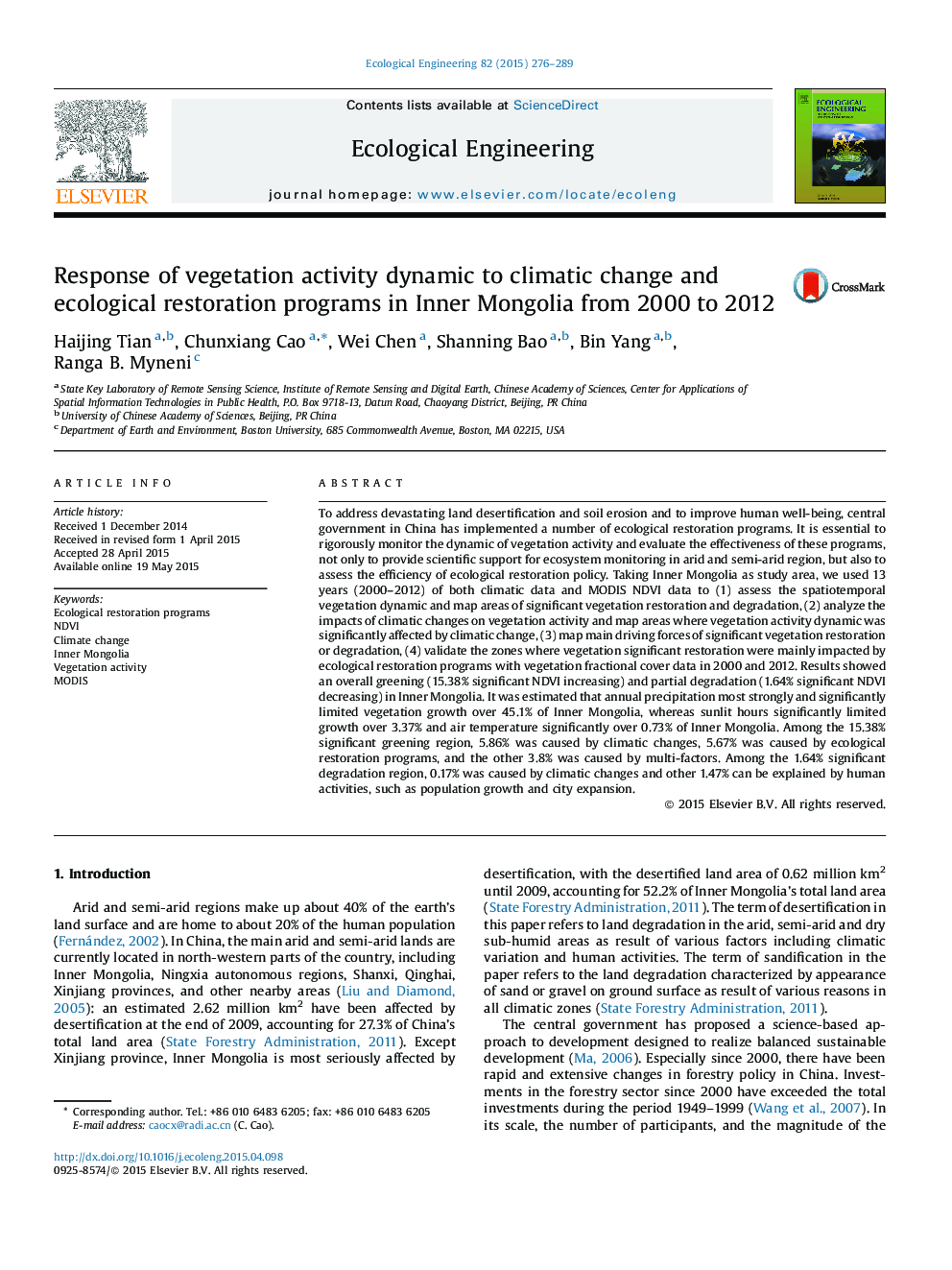| کد مقاله | کد نشریه | سال انتشار | مقاله انگلیسی | نسخه تمام متن |
|---|---|---|---|---|
| 4388973 | 1618017 | 2015 | 14 صفحه PDF | دانلود رایگان |
• We assess the spatiotemporal vegetation dynamic in Inner Mongolia and map areas of significant vegetation restoration and degradation.
• We analyze the impacts of climatic changes and ecological restoration programs on vegetation activity dynamic in Inner Mongolia.
• Annual precipitation most strongly and significantly limits vegetation growth over 45.1% of Inner Mongolia.
• Among the 15.38% significant greening region, 5.86% was caused by climatic changes, 5.67% was caused by ecological restoration programs.
• The effect of ecological restoration programs is best in Mu Us sandland among the five deserts and five sandlands in Inner Mongolia.
To address devastating land desertification and soil erosion and to improve human well-being, central government in China has implemented a number of ecological restoration programs. It is essential to rigorously monitor the dynamic of vegetation activity and evaluate the effectiveness of these programs, not only to provide scientific support for ecosystem monitoring in arid and semi-arid region, but also to assess the efficiency of ecological restoration policy. Taking Inner Mongolia as study area, we used 13 years (2000–2012) of both climatic data and MODIS NDVI data to (1) assess the spatiotemporal vegetation dynamic and map areas of significant vegetation restoration and degradation, (2) analyze the impacts of climatic changes on vegetation activity and map areas where vegetation activity dynamic was significantly affected by climatic change, (3) map main driving forces of significant vegetation restoration or degradation, (4) validate the zones where vegetation significant restoration were mainly impacted by ecological restoration programs with vegetation fractional cover data in 2000 and 2012. Results showed an overall greening (15.38% significant NDVI increasing) and partial degradation (1.64% significant NDVI decreasing) in Inner Mongolia. It was estimated that annual precipitation most strongly and significantly limited vegetation growth over 45.1% of Inner Mongolia, whereas sunlit hours significantly limited growth over 3.37% and air temperature significantly over 0.73% of Inner Mongolia. Among the 15.38% significant greening region, 5.86% was caused by climatic changes, 5.67% was caused by ecological restoration programs, and the other 3.8% was caused by multi-factors. Among the 1.64% significant degradation region, 0.17% was caused by climatic changes and other 1.47% can be explained by human activities, such as population growth and city expansion.
Journal: Ecological Engineering - Volume 82, September 2015, Pages 276–289
